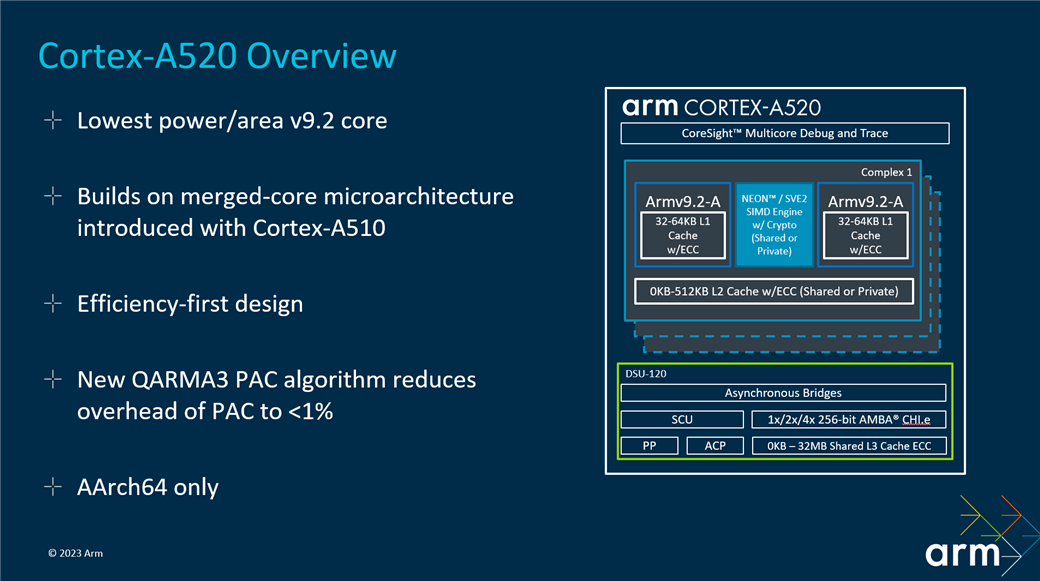Unleashing the Power: ARM's Next-Gen CPU and GPU Redefine Mobile Phone Chip Landscape
As the most important chip solution provider for mobile platforms, every architecture update of ARM will have a major impact on the industry. A few days ago, ARM announced a new generation of mobile CPU and GPU architecture and brought a series of new technologies.
If nothing else, Qualcomm MediaTek and other leading chip manufacturers will use these new architectures on their next-generation flagship chips. Therefore, the specifications and strength of the new ARM architecture play a key role in the actual performance of the next-generation flagship mobile phone.
Three CPU architectures debut and the number of cores can be piled up to 14
Corte-X4 ultra-large core
This time ARM has brought three new CPU architectures, namely Corte-X4 ultra-large core, large-core A720, and energy-efficient core A520, corresponding to the previous generation Cortex-X3, A715, and A510. The three new architectures are based on the ARM V9.2 instruction set. Compared with the previous generation of ARM V9.0, the support in terms of performance and parallelism has been upgraded.
According to the official data, the X4 ultra-large core has improved performance by 15%, reduced power consumption by 40%, and the L2 cache can be increased to 2MB; A720 has improved energy efficiency by 20%, and the same frequency performance has increased by 15%; 22% energy efficiency. Moreover, the architecture combination given by ARM has changed from "1+3+4" to "1+5+2", that is, the number of large-core A720s has been increased to five, which means that the role played by the large-core will become more important and become the main core. According to ARM officials, the performance of the "1+5+2" chip with the new architecture is 27% stronger than that of the previous generation "1+3+4" chip.
It is worth noting that the previous generation of A510, that is, the 2022 version of the A510, is not significantly improved compared to the 2021 version of the A510, but only slightly upgraded in energy efficiency. This time, A520 completely gave up the support for 32-bit applications. In the future, CPU products based on the new generation architecture will not support 32-bit applications. In other words, future Android developers will have to use 64-bit applications anyway, and the long-standing problem in the Android ecosystem will finally be completely solved.
DynamIQ management core DSU-120
ARM also brings a new DynamIQ management core DSU-120, which supports up to 14 core chips, that is, a combination of 10 X4+4 A720. Such a powerful architecture combination should not be used for mobile phones, but it is estimated that it will be used in PC products such as notebooks.
In a brief summary, the three CPU architectures released by ARM have stronger performance, lower energy consumption, and more cores, and will completely abandon 32-bit applications.
ARM's fifth-generation GPU
At present, the high-load scene on the mobile phone is the first game, and the performance of the GPU is very important. In addition to the new CPU architecture, ARM also brings a new generation of GPU architecture, including Immortalis G720, Mali G720 and Mali G620. Among them, Immortalis G720 has the strongest overall strength. Compared with the previous generation Immortalis G715, its performance per watt and peak performance have increased by 15%.
Deferred Vertex Shading (DVS)
The Immortalis G720 uses Deferred Vertex Shading (DVS), which ARM officials say can reduce memory and bandwidth resource usage and reduce bandwidth usage by 40%. According to the actual measurement of ARM, thanks to DVS technology, the actual performance of Immortalis G720 is increased by 20%.
The press release disclosed that in the Fortnite game, the bandwidth usage of Immortalis G720 was reduced by 26%; in the well-known high-load game Yuanshen, the bandwidth usage was further reduced to 33%. Improved memory and bandwidth utilization mean that the performance pressure on the GPU can be reduced, and developers can allocate more resources elsewhere. ARM also believes that a large part of the reason for the heating of mobile phone chips is due to frequent memory access. The application of DVS technology can significantly reduce power consumption.
Immortalis G720 starts with 10 cores and can reach up to 16. In addition, it will be equipped with ray tracing as standard. The Mali G720 is more like a downgraded version of the Immortalis G720, with 6-9 cores and ray tracing is not a standard feature but an optional feature. The Mali 620 has a maximum of 5 cores, and it feels like it should be used in mid-to-low-end chips.
Level of Energy Efficiency
Hack Password through Zydra
ARM said that the new GPU released this time has the highest level of energy efficiency performance ever, 15% higher than the average energy efficiency of the previous generation, and the peak performance has increased by an average of 15%.
G720 is currently the most powerful GPU for ARM?
It is not difficult to see that Immortalis G720 is currently the most powerful GPU for ARM, and the upgrade rate is quite obvious, especially with the addition of DVS technology so that the actual performance can be further improved. However, unlike the CPU architecture, there are not many leading mobile phone chip manufacturers on the market that use the ARM public version of the GPU. For Qualcomm, the comprehensive strength of its own Adreno is even better.




